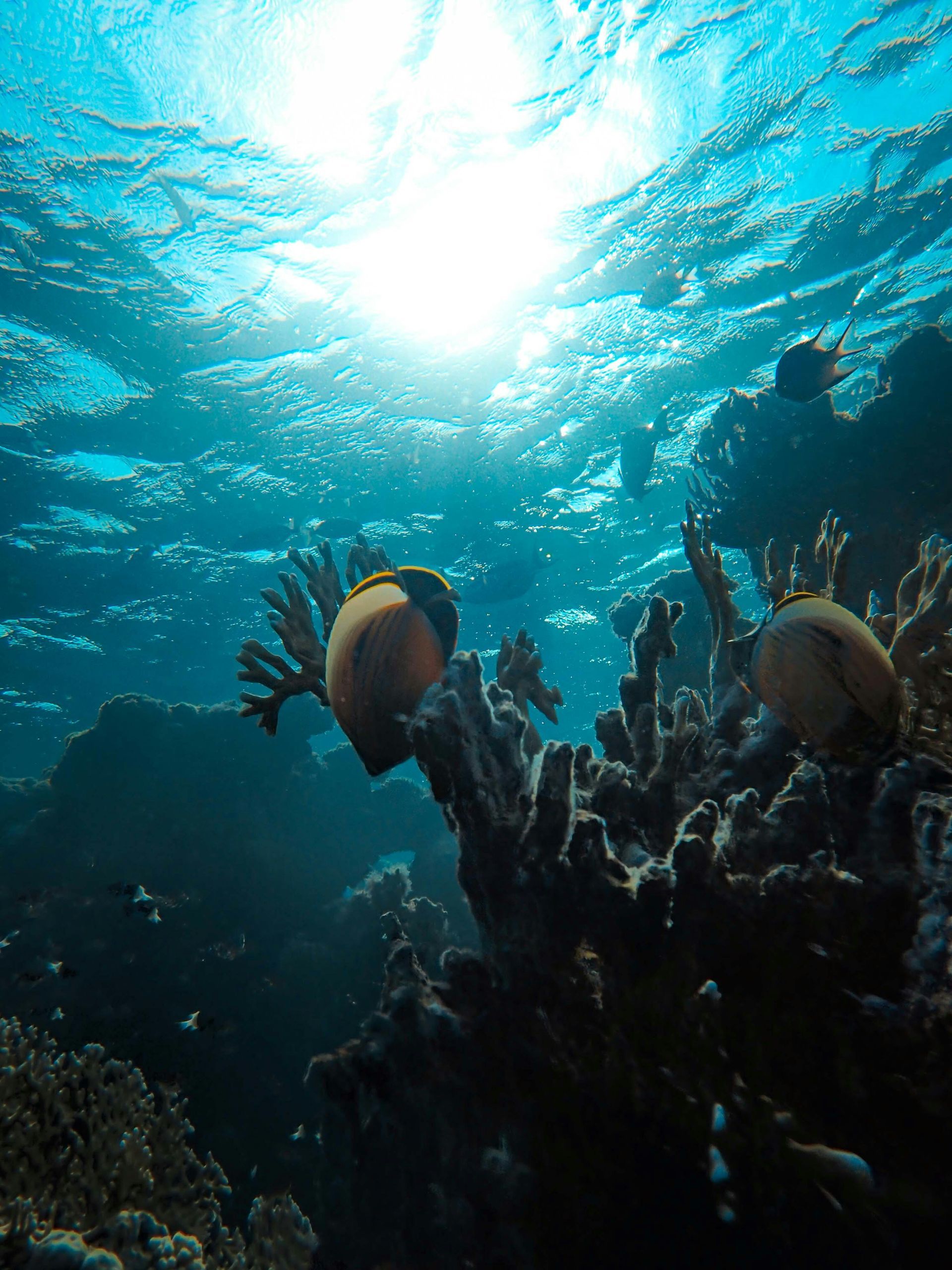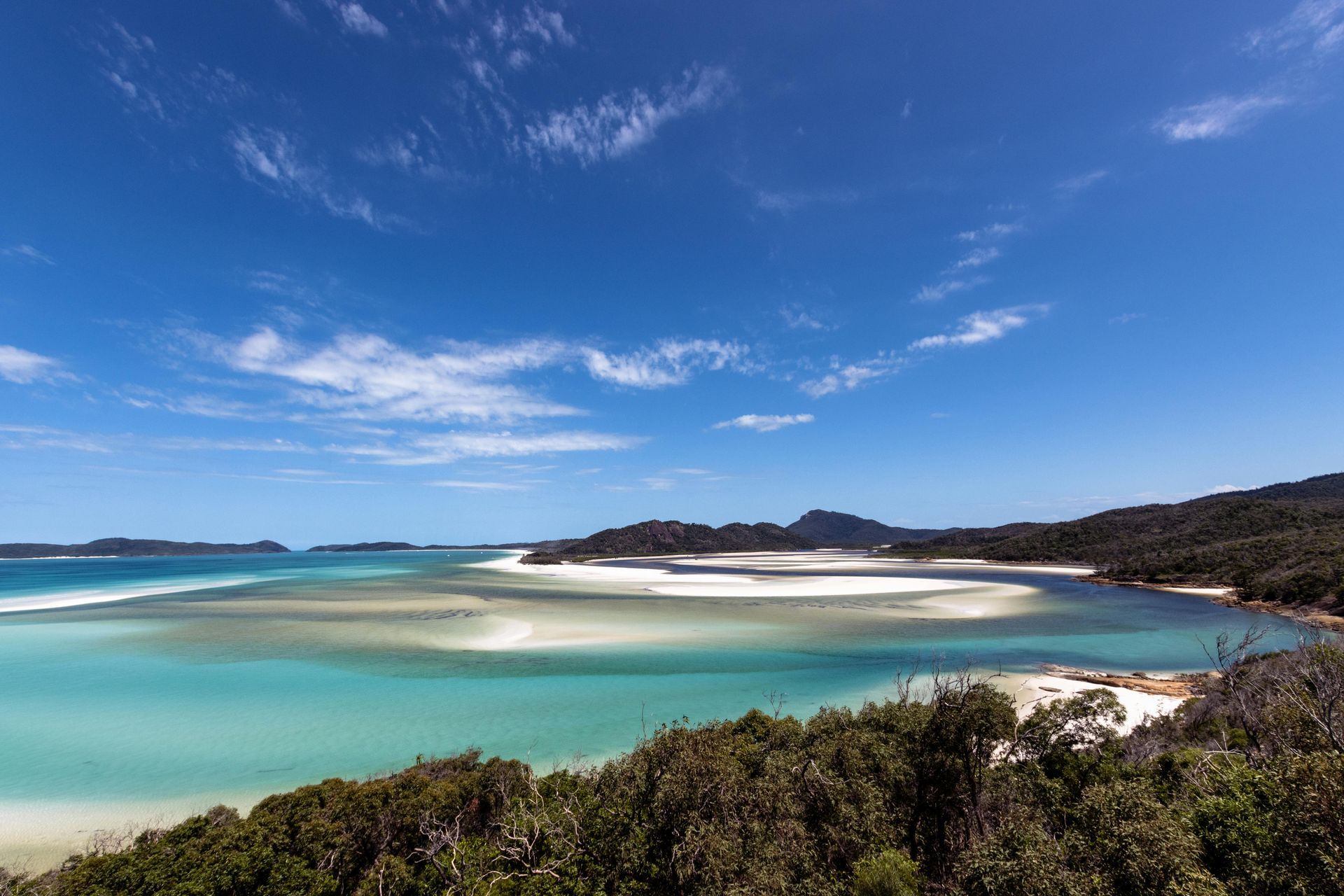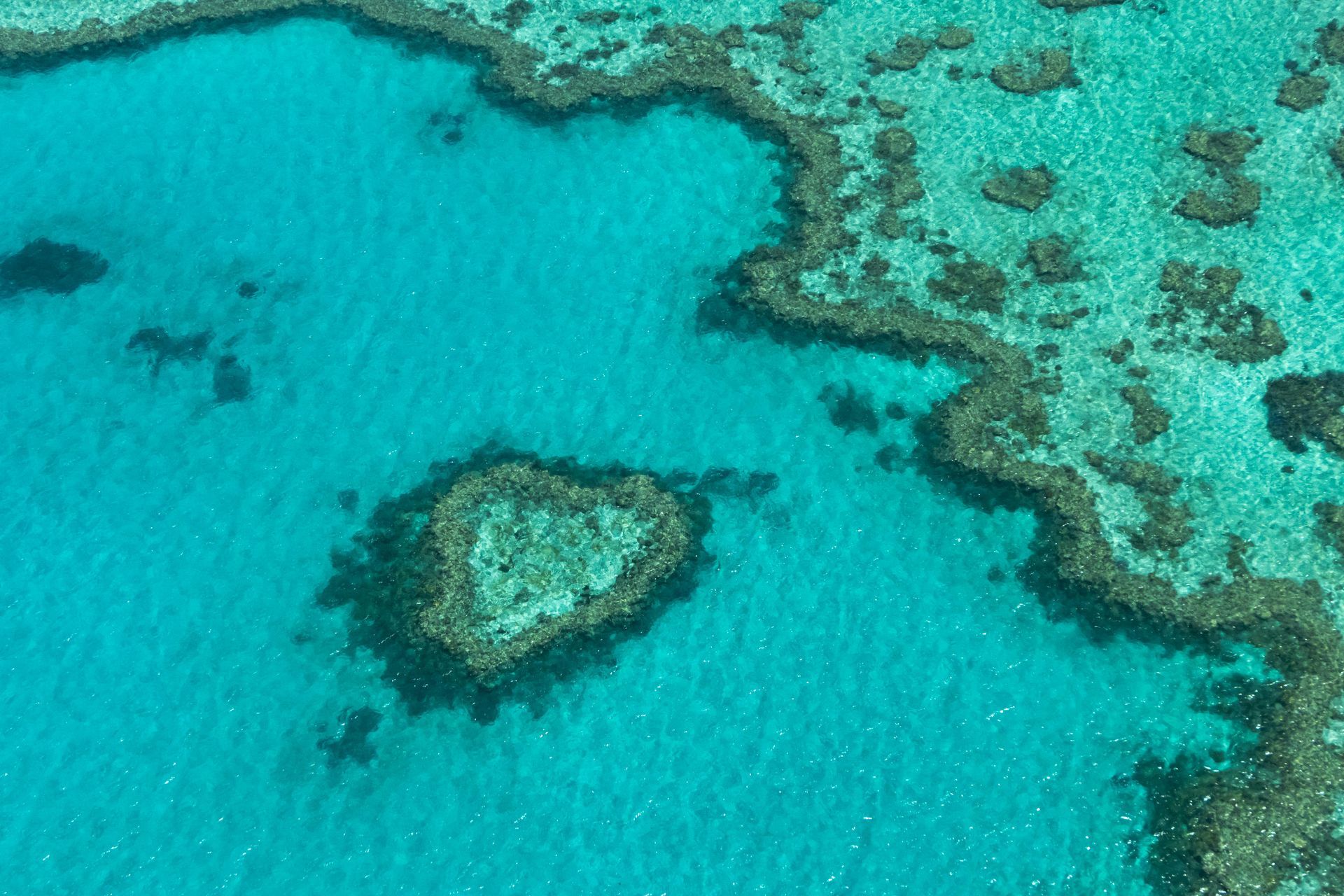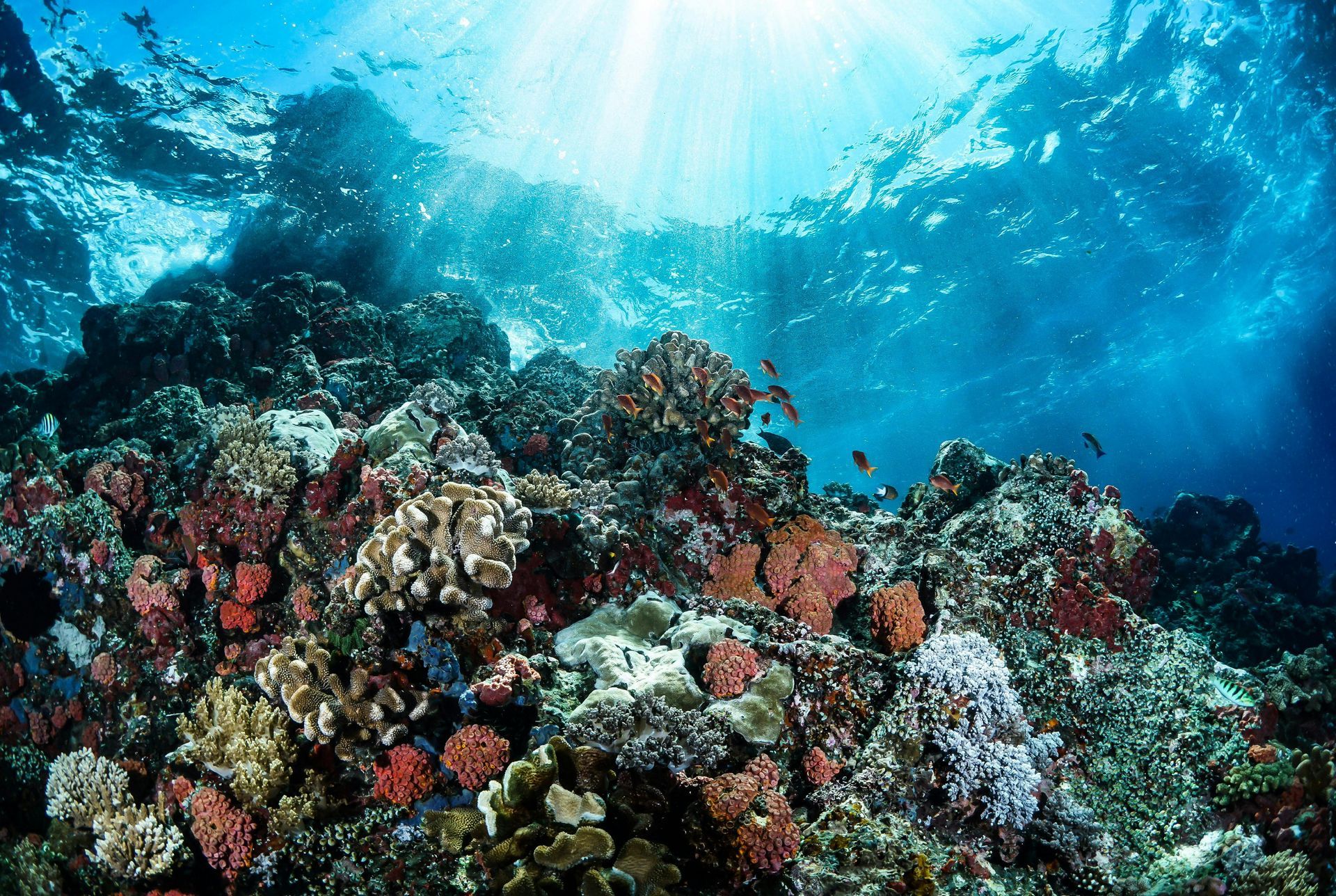The Great Barrier Reef
Dive into an Underwater Masterpiece
Holidays near the Great Barrier Reef
Your Guide to the Great Barrier Reef
Imagine floating in warm, crystal-clear turquoise water, surrounded by a kaleidoscope of colourful coral gardens and dazzling marine life. Picture turtles gliding gracefully past, giant clams resting on the seabed, and schools of fish shimmering in the sunlight filtering from above. Welcome to the Great Barrier Reef – the world's largest coral reef system, stretching over 2,300 kilometres along the coast of Queensland. It's so vast it can be seen from space, a complex, beautiful, living structure designated as a UNESCO World Heritage site and home to an incredible diversity of life.
Experiencing the Great Barrier Reef is a must-do for many UK visitors to Australia. For first-timers, this often means taking a day trip from Cairns or Port Douglas to snorkel or try an introductory dive on the Outer Reef or a nearby island. For returners, or those with more time, the opportunities expand: multi-day liveaboard diving trips exploring remote reef sites, staying on stunning coral cay islands like Heron or Lady Elliot in the Southern Reef, learning to dive, taking scenic helicopter flights over iconic spots like Heart Reef, or participating in conservation-focused tours. It’s a place of immense beauty and vital ecological importance.
Airports near the Great Barrier Reef
The Great Barrier Reef itself is offshore. To visit, you'll need to travel to coastal towns/cities in Queensland, primarily:
- Cairns International Airport (CNS): The main international and domestic gateway for the Northern Great Barrier Reef.
- Brisbane (BNE) / Bundaberg (BDB) / Gladstone (GLT): Gateways for accessing the Southern Great Barrier Reef
Exploring the Reef: Boats, Flights & Fins!
Getting out onto the Great Barrier Reef involves choosing the right vessel or aircraft:
- Large Outer Reef Pontoon Trips: Departing mainly from Cairns and Port Douglas, these large, stable catamarans travel to permanently moored platforms on the Outer Reef. Ideal for families, first-timers, or mixed groups, they offer a base with facilities (underwater observatory, sun decks, changing rooms) and a variety of activities including snorkelling, introductory and certified diving, semi-submersible tours, glass-bottom boat tours, and sometimes helicopter pads for scenic flights. Very stable, minimising seasickness risk.
- Smaller Day Boats / Catamarans: These vessels typically visit two or three different reef sites (Outer Reef or closer reefs/islands) in one day, offering a more focused snorkelling and diving experience. Can range from fast dive boats to sailing catamarans. Depart from Cairns, Port Douglas, Airlie Beach, and other coastal towns. Offer a potentially more intimate experience than pontoons.
- Island Day Trips: Ferries run from Cairns to nearby Green Island (a coral cay with rainforest) and Fitzroy Island (a larger continental island with hiking). Both offer resort facilities, beaches, snorkelling from shore or boat, and glass-bottom boat options. Good for those wanting an island base. Trips to islands like the Low Isles (from Port Douglas) or parts of the Whitsundays (from Airlie Beach) are also popular day tours.
- Liveaboard Dive/Snorkel Boats: For keen divers and snorkellers wanting maximum water time and access to more remote, pristine sites. These trips range from 2 days/1 night to week-long expeditions, departing from Cairns, Port Douglas, or Airlie Beach. Accommodation and meals are onboard. Offers the chance for night dives and sunrise snorkels.
Weather & Climate
For the best combination of comfortable weather, calm seas, excellent visibility, and avoiding stingers, aim for the Dry Season (May to October). September and October are often particularly lovely. If travelling in the Wet/Stinger Season (Nov-May), always wear the provided protective suits and be prepared for rain/humidity.
Reef Wonders: 4 Must-Do Experiences

Snorkel or Dive the Outer Reef
This is the quintessential Great Barrier Reef experience. Take a boat trip from Cairns or Port Douglas out to the edge of the continental shelf – the Outer Reef. Here you'll generally find the most spectacular coral formations, clearer water, and the greatest diversity and abundance of marine life. Whether you snorkel on the surface or take an introductory or certified dive, exploring this vibrant underwater world with its

Land on an Island Paradise
Experience the Reef from a different perspective by visiting one of its islands. Take an easy day trip ferry from Cairns to Green Island (a true coral cay you can walk around) or Fitzroy Island (larger, with rainforest walks and fringing reefs). Both offer snorkelling, glass-bottom boats, and resort facilities. Alternatively, explore the Whitsunday Islands (from Airlie Beach) known for sailing and the stunning silica sands of Whitehaven Beach. Or, for dedicated nature lovers, consider flying to Lady Elliot Island or Heron Island in the Southern Reef, famous for turtle nesting/hatching (seasonal) and manta ray encounters.

Gain Perspective with a Scenic Flight
ruly appreciate the immense scale and intricate beauty of the Great Barrier Reef by seeing it from above. Take a helicopter or fixed-wing scenic flight departing from Cairns, Port Douglas, or Airlie Beach/Hamilton Island. Soar over vibrant reef systems, sand cays, tropical islands, and maybe even spot the iconic Heart Reef (best seen from the Whitsundays region). The patterns and colours visible from the air are simply breathtaking and offer incredible photo opportunities.

Learn About & Protect the Reef
Enhance your visit by understanding this precious and fragile ecosystem. Choose tour operators with Advanced Ecotourism Certification who employ marine biologists and follow sustainable practices. Listen to informative talks onboard, visit educational centres like Reef Teach in Cairns (evening presentations), or the Reef HQ Aquarium in Townsville. Appreciate the challenges the Reef faces (climate change, water quality) and learn how responsible tourism helps contribute to its conservation.
Tips for First-Time Visitors
Your Reef experience depends heavily on the tour you choose. The Outer Reef generally offers better coral and visibility than the Inner Reef or fringing reefs around closer islands. Large pontoon trips are very stable (good if prone to seasickness) and offer lots of activities for all abilities. Smaller boats may visit multiple, less-crowded sites and appeal more to keen snorkellers/divers. Consider your departure point (Cairns has the most choice, Port Douglas is closer to some Outer Reef sites, Airlie Beach is for the Whitsundays). Research operators based on your interests, budget, and comfort level. Book ahead, especially in peak season!
Choose Your Trip Wisely (Location & Boat Style)
The tropical Queensland sun is intense, amplified by water reflection. Reef-safe sunscreen (SPF 50+, free of oxybenzone/octinoxate) is essential – apply liberally and often. Wear protective clothing like a rash vest or t-shirt while snorkelling, plus a wide-brimmed hat and sunglasses on the boat. Critically, during stinger season (roughly November to May), always wear the full-body lycra stinger suit provided or rented by your tour operator when in the water. Stings from Box Jellyfish or Irukandji can be extremely dangerous. Heed all safety briefings from the crew.
Sun & Stinger Safety is Vital:
Journeys to the Outer Reef can take 90 minutes or more each way on open water. If you are prone to seasickness: choose a larger, more stable vessel (catamarans or pontoons); take preventative medication (like Kwells or Dramamine) before you board, following instructions; stay hydrated (water, not caffeine/alcohol); avoid greasy food beforehand; stay on deck in the fresh air, looking at the stable horizon (not down at your phone!). Ginger tablets/candies or acupressure bands may also help some people.
Combat Potential Seasickness
The Great Barrier Reef is a precious natural treasure. Be a responsible visitor: NEVER touch coral (it's a living animal and easily damaged) or any marine life. Avoid kicking up sediment near the coral with your fins. Take all your litter back with you. Choose reef-safe sunscreen. Listen carefully to briefings from crew and guides on how to minimise your impact. Support eco-certified tour operators who actively contribute to reef research and conservation. Your mindful visit helps protect the reef for future generations.
Be a Reef Champion (Respect the Environment)
Great Barrier Reef: An Underwater World of Wonder!
The Great Barrier Reef is truly one of the planet's most spectacular natural assets. Its sheer scale, vibrant colours, and incredible biodiversity offer an unparalleled underwater experience, whether you're snorkelling gently on the surface or diving deep amongst the coral gardens. It's a place of immense beauty, fragility, and ecological significance.
Visiting this underwater masterpiece from Queensland's tropical coast is an achievable dream for UK travellers heading Down Under. By choosing your trip carefully, staying safe in the tropical environment, and travelling responsibly, you can ensure your encounter with the Great Barrier Reef is both breathtakingly memorable and respectful of this precious global icon. Enjoy the magic!








